Introduction & Drive Details
Back in January of this year, we took a close look at Rocket 4 Plus 4TB and at that time, we declared it to be the King of SSDs. Well, the king has expanded its Navy by teaming up with HighPoint Technologies to create what Sabrent has christened "The Destroyer".
The Destroyer is aptly named as it has destroyed all throughput numbers we've seen from any flash-based storage device. It is even doing throughput higher than we can get from the fastest DDR4. Amazing. In fact, it's so amazing that we were falsely accused by one benchmark maker of posting DRAM speeds and calling them SSD speeds. That's the magnitude of what this Sabrent/Highpoint collaboration is capable of delivering.
This review will be a bit different than our standard SSD reviews due to the unique nature of "Destroyer". The aptly named Destroyer is a highly specialized product not intended to be used as a typical consumer bootable storage device. It is intended for workstation and server applications where higher sequential throughput equals faster data processing. As such, this will be a standalone review without comparison products or charts.
Additionally, the price of ownership (10K) is way outside what we consider to be in the consumer realm. We have tested the Destroyer on both Intel and AMD platforms and will be providing benchmarks for both and step-by-step RAID volume creation with HighPoint's browser-based RAID Management tool.
Drive Details
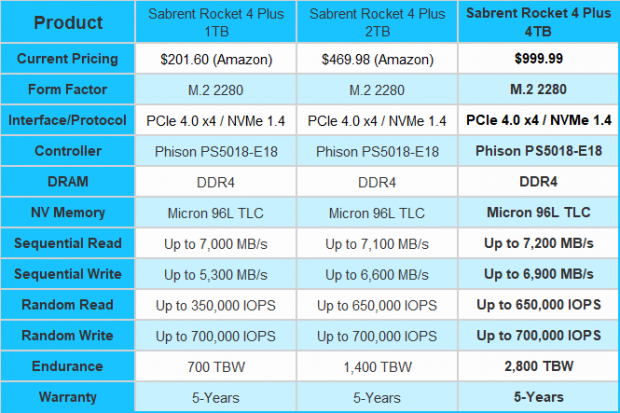
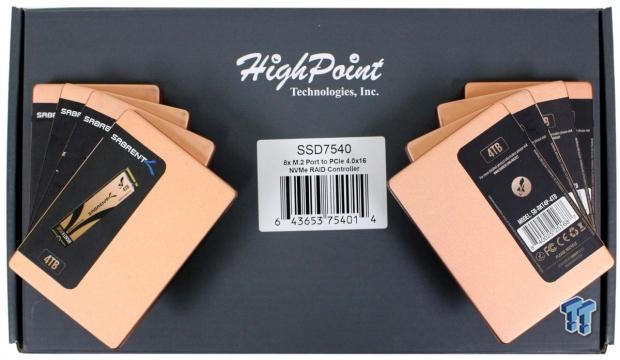
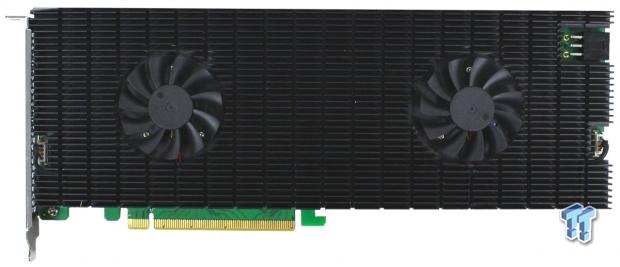
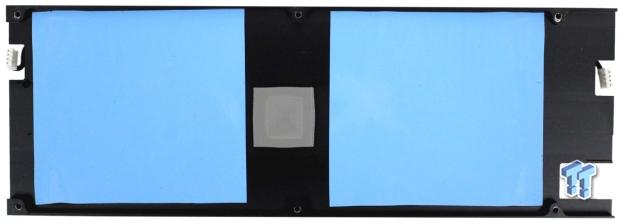
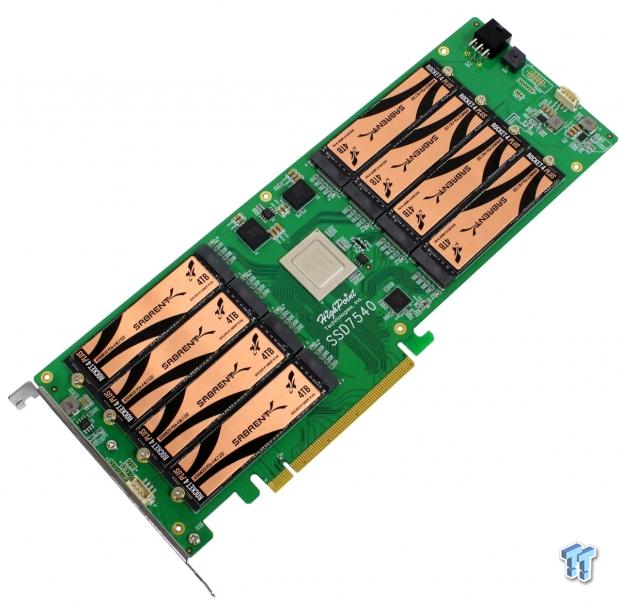
The Destroyer is built on a HighPoint SSD7540 PCIe Gen4 x16 RAID card featuring a Broadcom PCIe Gen4 8 series PEX switch managing eight onboard M.2 slots. The card requires additional power via a 6-pin VGA power cable. The SSDs are cooled by a heavy-duty solid aluminum heat sink with thermal pads and active cooling. This single-slot card is about the length of a high-end graphics card.
Jon's Intel Test System Specifications
- Motherboard: ASUS ROG Maximus Extreme XIII Glacial - Buy from Amazon
- CPU: Intel Core i9-11900K - Buy from Amazon
- Cooler: Alphacool Eissturm Hurricane Copper 45 - Buy from Amazon
- RAM: Thermaltake TOUGHRAM XG RGB DDR4 4600MHz 16GB (8GB x 2) - Buy from Amazon
- Video Card: Zotac 2080Ti AMP Edition - Buy from Amazon
- Case: PrimoChill's Praxis Wetbench - Buy from Amazon
- Power Supply: Corsair AX1000 - Buy from Amazon
- OS: Microsoft Windows 10 Pro 64-bit - Buy from Amazon
Jon's AMD Test System Specifications
- Motherboard: ASUS ROG Crosshair Hero VIII Wi-Fi - Buy from Amazon
- CPU: AMD Ryzen 9 5900X - Buy from Amazon
- Cooler: Alphacool Eissturm Hurricane Copper 45 - Buy from Amazon
- RAM: Corsair Dominator Platinum RGB 32GB (2x16GB) DDR4 4000 - Buy from Amazon
- Video Card: GIGABYTE GeForce RTX 2070 WINDFORCE 8G - Buy from Amazon
- Case: PrimoChill's Praxis Wetbench - Buy from Amazon
- Power Supply: Corsair AX1000 - Buy from Amazon
- OS: Microsoft Windows 10 Pro 64-bit - Buy from Amazon

HighPoint RAID Management 2.17.4
HighPoint has a browser-based RAID utility to create and manage RAID arrays on its SSD7540 RAID card. This is what we used to create the powerful RAID 0 arrays we used for this review. The RAID tool works in conjunction with a HighPoint NVMe controller driver that needs to be installed before using the RAID tool. You can get the driver and tool here.
We will note that the Destroyer is bootable if desired, but we don't recommend it be used as a boot volume.
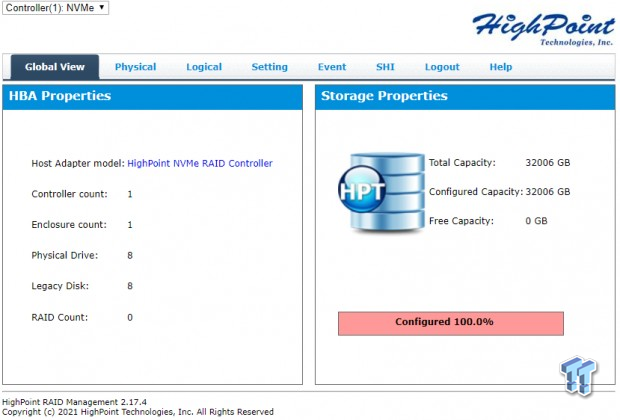
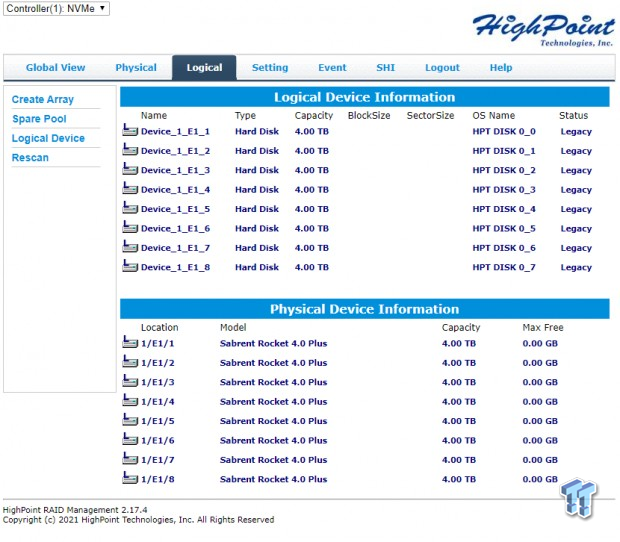
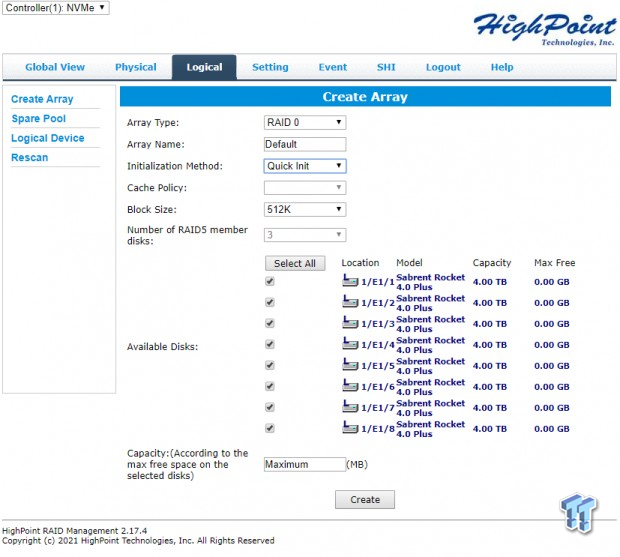
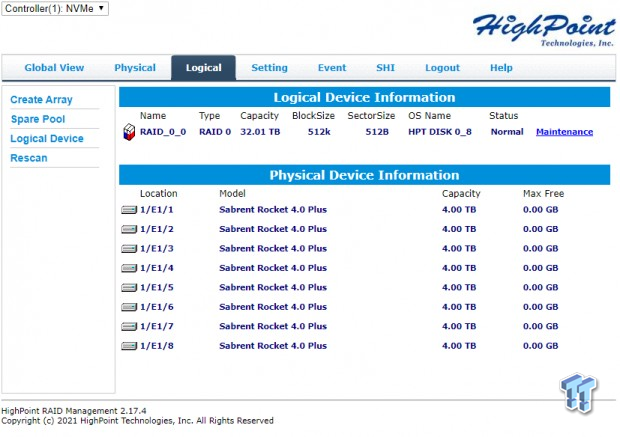
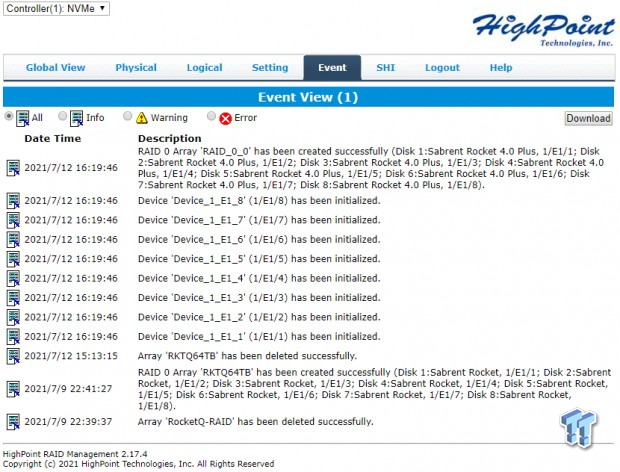
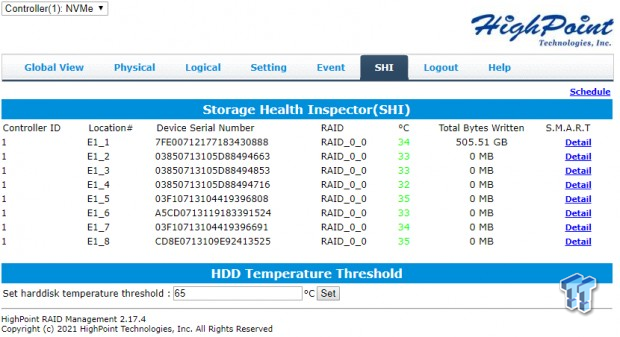
The Destroyer can be configured in various RAID configurations, including RAID 10. For the purposes of this review, we choose RAID 0 with the default 512K block size as this will enable peak performance. HighPoint's RAID tool is easy to use and worked flawlessly.
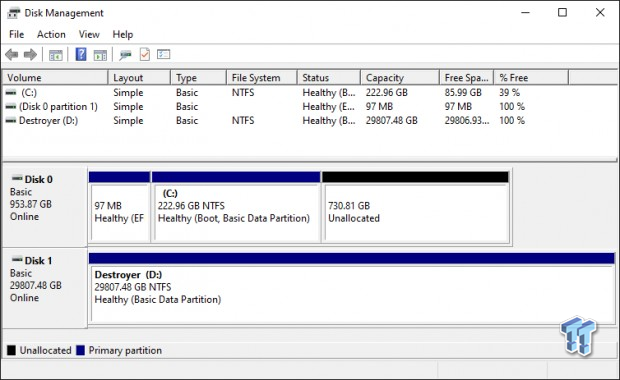
Our NTFS formatted RAID 0 volume yields 29,807 gigabytes available to the user.
Synthetic Benchmarks: CDM, Anvil, ATTO, AJA
CrystalDiskMark
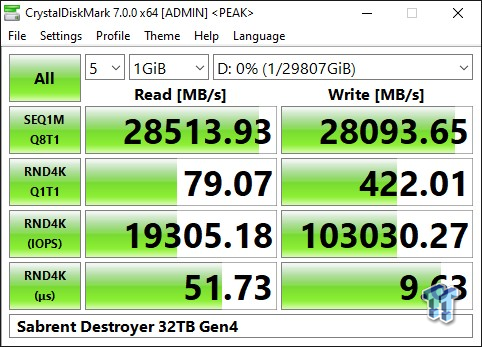
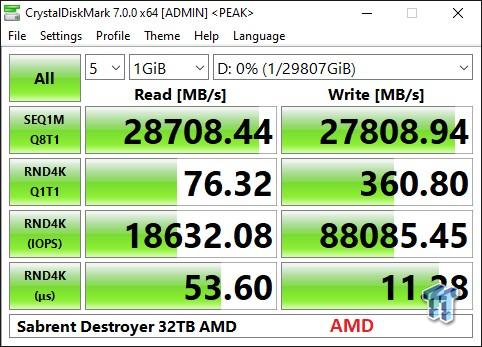
And there you have it, 28,000 MB/s sequential reads and writes. That is more sequential throughput than DDR4. Intel with slightly better write throughput, AMD slightly better read throughput. There are workloads where sequential speeds are king, and those are the kinds of workloads the Destroyer is made for.
No wonder this storage configuration is selling like hotcakes for workstation and server applications. 28K MB/s seq read/write and a massive 30TB of usable storage on one card. Amazing.
Anvil's Storage Utilities
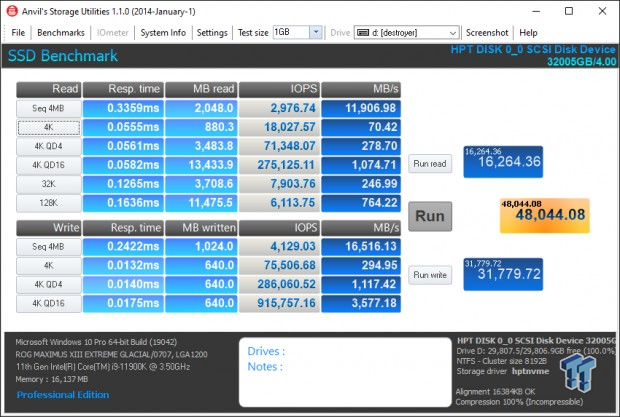
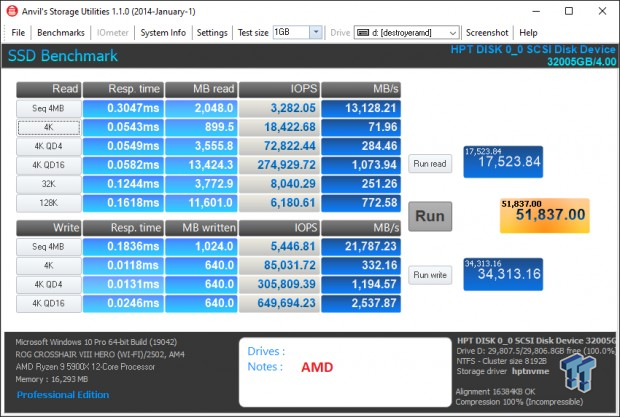
48K and 51K scores are jaw-dropping, to be sure. What we see here is that sequential speeds are done as RAID 0 while random performance is the same as we get from a single drive. That's because the Destroyer is purpose build for sequential workloads and broad hardware compatibility. With the Destroyer, you don't need a massive thread count CPU to handle random IOPS by the millions because it is solely sequential focused.
We didn't test it, but we can make an educated guess that a low-end four-core CPU can extract similar sequential speeds as we are getting from our high-end test systems.
ATTO
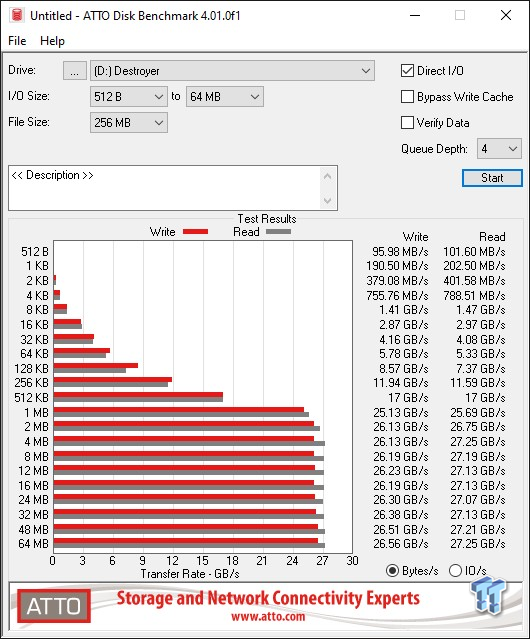
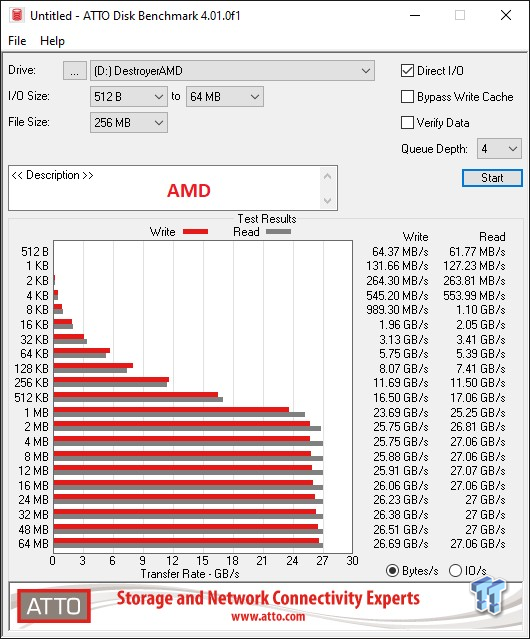
We are essentially running at full speed at 1MB transfers. This is remarkably good, considering we are testing at a queue depth of 4. Both platforms are dialing up tremendous throughput, with the advantage going to Intel due to its better small file performance. 27 GB/s throughput at QD4 amazing.
AJA Disk Test
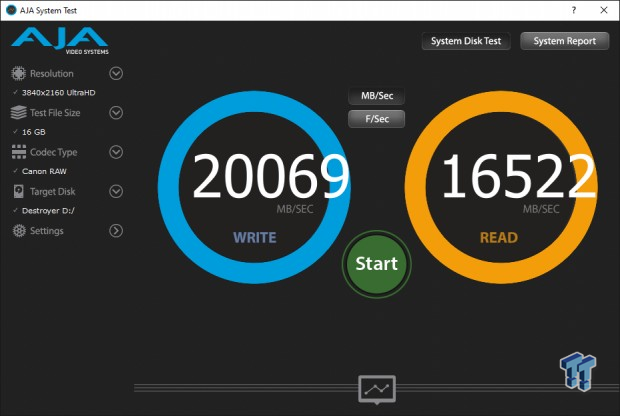
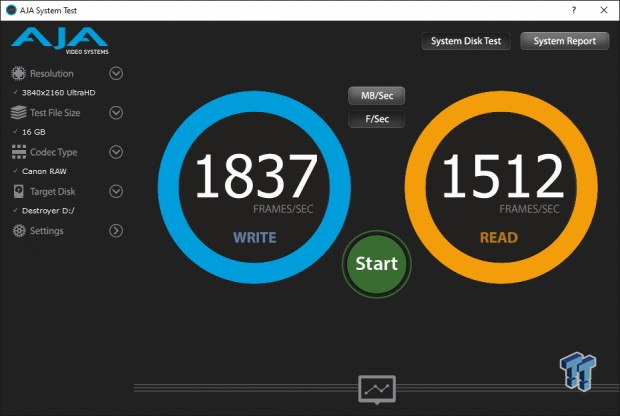
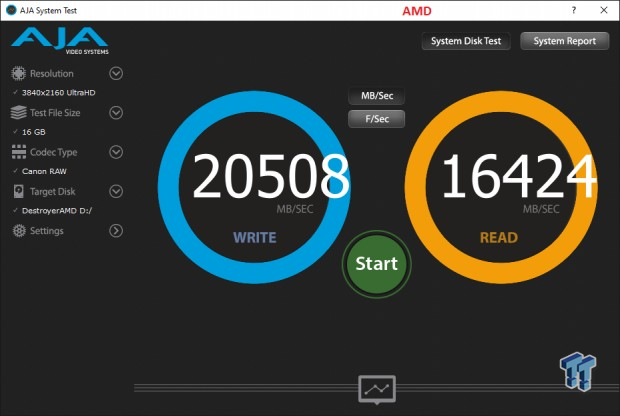
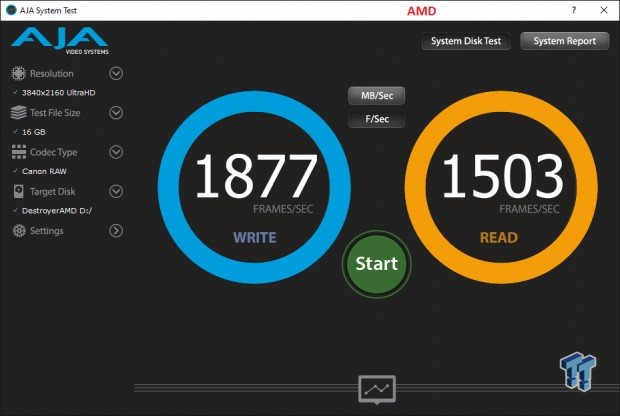
We've never used this test before, but we thought it would be ideal for the Destroyer because it tests with video codecs of various file sizes. We chose Canon 4K RAW at a 16GB file size. We are showing both MB/s and FPS results. With results like this, it's no wonder the Destroyer is targeted for professional video processing applications.
Real-World Testing: Transfers PCM10
Transfer Rates
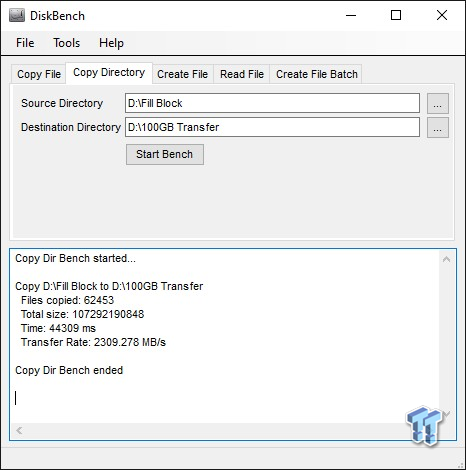
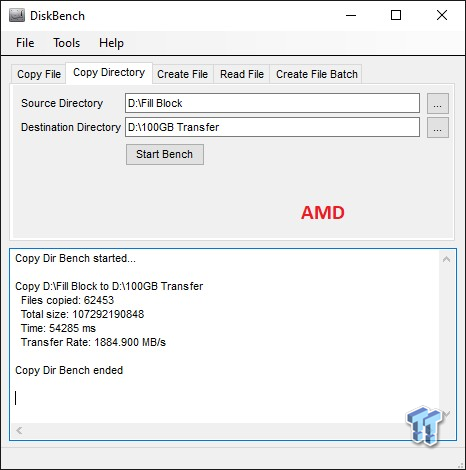
These write transfer rates might seem a little slow, but they are actually by far the best we've obtained from a flash-based storage device. Our 100GB data transfer is composed of more than 62,000 files of random types of data, making it very hard to swallow for any storage device. Not the type of data the Destroyer is targeted at. We just wanted to see how it would handle it.
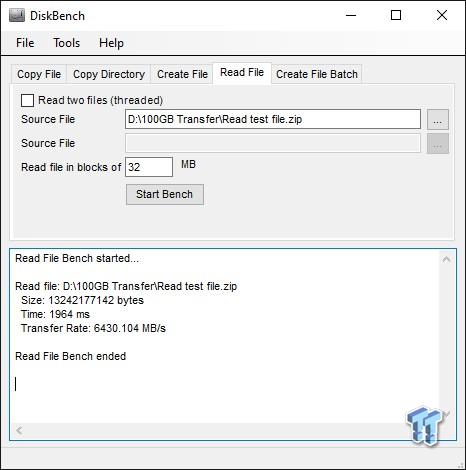
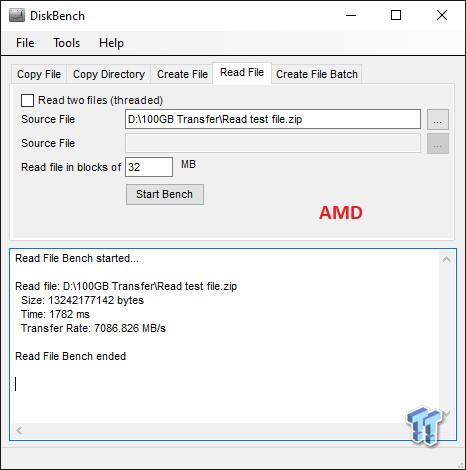
Our read transfer file is more to the Destroyer's liking because it is a single Zip file. As expected, our AMD system serves data to the host at a higher rate than our Intel system. 7,000 MB/s here is by far the best we've seen, even besting the second generation Optane by a country mile.
PCMark 10 Data Drive Benchmark
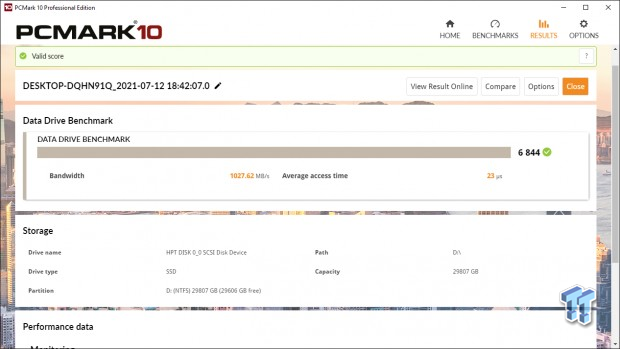
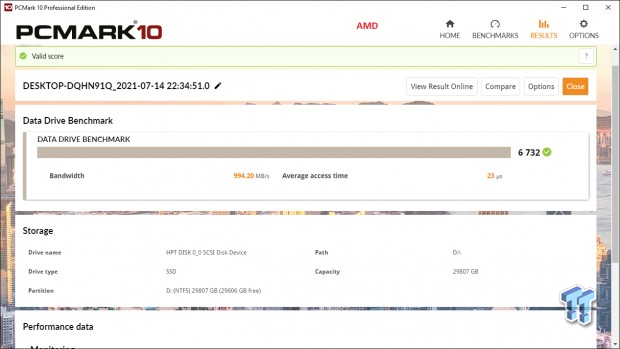
This test is again a bit outside the wheelhouse of what the Destroyer is intended for; however, it does give us some insight as to how it would function as a typical consumer data drive. How does it do? Lab record for flash-based is how it does. Outstanding.
Final Thoughts
The Destroyer does what it's intended for at the highest rates we've ever seen. Stop and think about it. More sequential throughput than DDR4? And 30 terabytes of usable capacity? There is nothing faster that we know of; we've certainly never seen the likes of it before.
And as an unforeseen testimonial of sorts, we got into a Twitter feud with a benchmark company who, in their ignorance, accused us of posting RAM Disk speeds even though current DDR4 isn't capable of reaching 20,000 MB/s seq. speeds, as measured by CDM.
Sabrent has its storage tentacles everywhere, whether it be value-based consumer SSDs or extreme workstation storage. Sabrent is everywhere, man. We want to thank Sabrent for letting us have our way with the exotic Sabrent-powered storage device known as the Destroyer. We love it.

